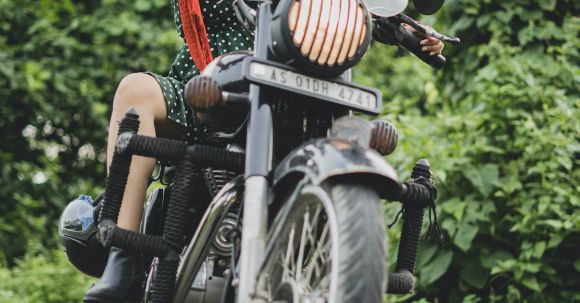Off-road riding can be an exhilarating experience, but it also requires a different set of skills compared to riding on paved roads. One crucial aspect of off-road riding is maintaining a proper riding position. A good riding position not only enhances your control over the bike but also helps you navigate through challenging terrains more effectively. In this article, we will explore some tips and techniques to improve your riding position for off-road riding.
Understanding the Basics
Before we dive into the specifics, it is essential to understand the basic principles of a good riding position. The three key elements of a proper riding position are balance, control, and flexibility. Your body should be balanced over the bike, allowing you to maintain control and react to any obstacles or changes in the terrain. Flexibility is crucial for absorbing shocks and adjusting your body position as needed.
Grip with Your Knees
One technique that can greatly improve your riding position is gripping the bike with your knees. This helps in maintaining balance and control. By squeezing your knees against the tank, you create a solid connection between your body and the bike. This technique becomes even more critical when standing up on the footpegs, as it allows you to use your legs as shock absorbers and maintain stability.
Standing Position
When riding off-road, you will often find yourself standing on the footpegs. This position gives you better control over the bike and improves your ability to handle rough terrains. To get into the standing position, start by shifting your weight slightly backward, then rise up on the footpegs while keeping your knees bent. This posture lowers your center of gravity, making it easier to maneuver the bike.
Bend Your Elbows
Another important aspect of a good riding position is the position of your arms. When standing on the footpegs, it is crucial to keep your elbows bent. This allows your arms to act as additional suspension and helps absorb the shocks from the rough terrain. Keeping your arms relaxed and slightly bent also improves your control over the handlebars, enabling you to make quick adjustments as needed.
Look Ahead
Maintaining good vision is essential when riding off-road. Always look ahead and focus on where you want to go, rather than fixating on the obstacles directly in front of you. By looking ahead, you can anticipate changes in the terrain and plan your actions accordingly. This also helps you maintain a smooth and fluid riding style, as you can adjust your body position and weight distribution in advance.
Use Your Core
Your core muscles play a crucial role in maintaining a stable riding position. Engaging your core muscles helps you stay balanced and absorb shocks from the bike. It also allows you to make quick adjustments with your body, such as leaning forward or backward, without losing control. By strengthening your core muscles through exercise and practicing proper body position, you can significantly improve your off-road riding skills.
Conclusion
Improving your riding position for off-road riding is essential for enhancing your control, balance, and overall riding experience. Remember to grip the bike with your knees, maintain a proper standing position, keep your elbows bent, look ahead, and engage your core muscles. By implementing these techniques and practicing them regularly, you will become a more confident and skilled off-road rider. So, get out there, hit the dirt, and enjoy the thrill of off-road riding with a better riding position.
